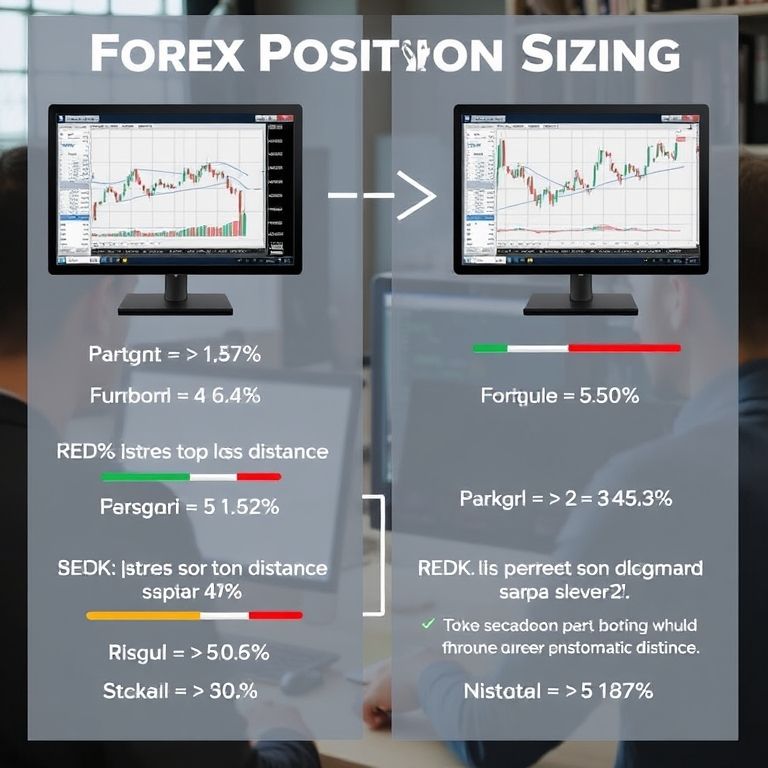How to calculate position size with stop loss distance in forex
How to calculate position size with stop loss distance in forex
Trading forex isn’t just about picking a direction; it’s about sizing your bets so you can stay in the game. The stop loss distance you choose has a real impact on how much you can risk per trade, which in turn shapes your overall edge. This article walks you through the practical steps to size positions accurately, tying stop distance to your account, risk tolerance, and the instrument you’re trading.

The core idea you’ll want to internalize
- Position size should reflect a fixed dollar risk per trade, not chase a fixed number of pips. In plain terms: the farther your stop, the smaller your position has to be, unless you’re prepared to risk more dollars. This keeps your risk consistent as volatility shifts and helps you survive drawdowns without abandoning discipline.
A simple formula you can apply
- Position size = Account risk dollars / (Stop distance in pips × Pip value per pip)
- Pip value per pip depends on the pair and the lot size. Roughly: micro lots (~0.01) ≈ $0.10 per pip on major USD pairs, mini lots (~0.1) ≈ $1 per pip, standard lots (1.0) ≈ $10 per pip. Adjust for non-dollar pairs or unusual quotes.
Worked example
- You’re trading on a $12,000 account, willing to risk $120 on a trade, with a stop 60 pips away. If you’re using micro lots, pip value is about $0.10/pip. Position size ≈ 120 / (60 × 0.10) = 20 micro lots (0.20 micro?), which translates to about 0.02 standard lots. The idea holds: larger stop = smaller position, unless you’re explicitly accepting larger risk.
Volatility-aware stop placement
- Don’t pick stop distance in a vacuum. Use a volatility benchmark like ATR (average true range) to set a sensible distance. If the instrument’s ATR over your horizon is 20 pips, a 60-pip stop might be three times ATR, which is a defensible choice if your risk cap allows it. The key is consistency: align stop distance with your risk budget and the instrument’s typical moves.
Asset-specific notes and learning across markets
- Forex, stocks, crypto, indices, options, and commodities each have their own quirks: contract sizes, liquidity, and how “pips” translate to dollars. Cross-asset learning helps you see how risk scales with liquidity and volatility, and reminds you to adapt your pip-value assumptions accordingly. Paper-trade sizing logic before going live, and keep a simple log to spot drift over time.
DeFi, smart contracts, and the AI edge
- Decentralized finance adds automation and liquidity-layer risks, but also opportunities for automated order execution and risk controls via smart contracts. AI-driven tools can help optimize stop placement and position sizing by analyzing volatility, correlations, and your historical drawdowns. The challenge is guarding against slippage, high gas costs, and protocol risk as you experiment with new venues.
Prop trading and the path forward
- In prop shops, disciplined sizing is a core skill that scales with capital. The ability to keep risk per trade constant even as markets swing is a real differentiator. As markets evolve toward multi-asset trading, a robust sizing framework becomes a universal language traders can carry across forex, stocks, crypto, and commodities.
Promotional slogans you can relate to
- Size your risk, not the hype.
- Stop distance isn’t just distance—it’s capital protection.
- Trade with intention, scale with discipline.
Reliability tips and strategic takeaways
- Backtest your sizing rule on historical data and run paper trades to build muscle memory before real capital.
- When in doubt, tighten stops or reduce position size rather than bending risk targets after a drawdown.
- Keep your focus on a clear edge: a consistent risk budget per trade, aligned with your total capital and long-term goals.
Catching the wave of the future
- The move toward AI-assisted risk analytics, smart-contract automation, and cross-asset liquidity networks suggests a landscape where disciplined sizing remains foundational. Whether you’re trading forex, crypto, or futures, the core discipline—risking a fixed amount per trade and letting stop distance scale your exposure—will keep you resilient as markets evolve.
YOU MAY ALSO LIKE